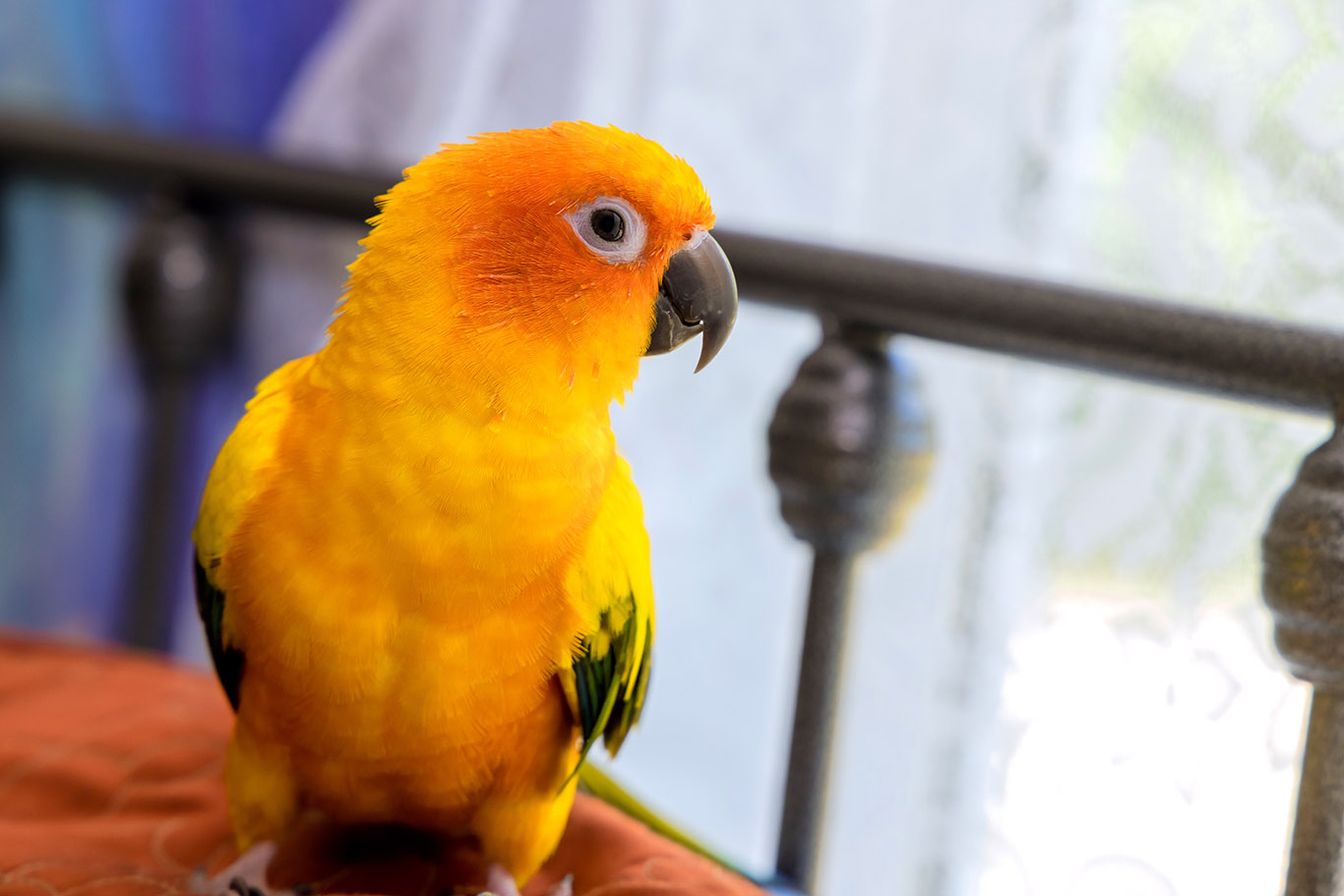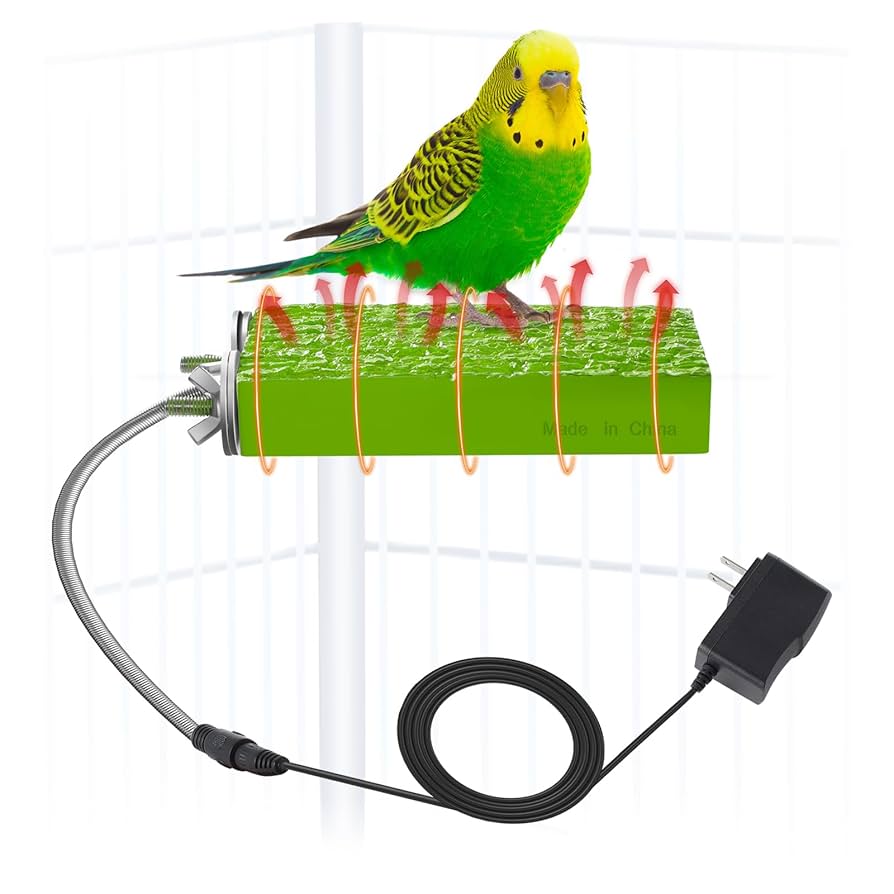Keeping your pet bird comfortable and healthy starts with one simple thing: the right temperature. You might not realize it, but the air around your feathered friend can make a huge difference in their happiness and well-being.
Too hot or too cold, and your bird could face serious health risks. But what exactly is the safe temperature for pet birds? You’ll discover easy-to-follow tips to create the perfect environment for your bird. By the end, you’ll feel confident in protecting your pet from temperature dangers and ensuring they thrive every day.
Keep reading—your bird’s comfort depends on it.

Credit: birdsupplies.com
Ideal Temperature Range
Pet birds need a comfortable temperature to stay healthy. Too hot or too cold can cause stress or illness.
Knowing the right temperature range helps you care for your bird well. This guide covers safe daytime and nighttime temperatures.
Optimal Daytime Temperatures
During the day, pet birds are most active. They need a warm but not too hot environment to thrive.
- Keep temperatures between 65°F and 80°F (18°C to 27°C).
- Avoid sudden temperature changes that may shock your bird.
- Ensure good ventilation without drafts.
- Use natural light or full-spectrum lighting to mimic daylight.
Safe Nighttime Temperatures
At night, birds rest and need slightly cooler temperatures. Too cold can make them sick.
| Temperature Range | Effect on Birds |
|---|---|
| 60°F to 70°F (15°C to 21°C) | Ideal for most pet birds to sleep comfortably |
| Below 60°F (15°C) | Risk of chill and respiratory problems |
| Above 70°F (21°C) | Can cause restlessness and stress |
Temperature Sensitivity By Bird Species
Pet birds need the right temperature to stay healthy and happy. Different species have different temperature needs.
Knowing how sensitive your bird is to temperature helps you create a safe home environment.
Tropical Birds
Tropical birds come from warm, humid places. They need stable, warm temperatures to thrive.
Ideal temperatures for tropical birds range from 75°F to 85°F (24°C to 29°C). Sudden cold can cause stress or illness.
- Examples: parrots, lovebirds, and cockatoos
- Keep away from drafts and cold air
- Maintain humidity around 50-60%
Temperate Birds
Temperate birds live in areas with changing seasons. They tolerate a wider temperature range than tropical birds.
Safe temperatures for temperate birds are about 65°F to 75°F (18°C to 24°C). Avoid sudden drops below 60°F (15°C).
- Examples: finches, canaries, and budgerigars
- Provide warmth during cold nights
- Use heat lamps if needed in winter
Cold-climate Birds
Cold-climate birds come from chilly places. They handle cooler temperatures better than other birds.
These birds do well in temperatures from 50°F to 65°F (10°C to 18°C). Keep them dry and avoid drafts.
- Examples: some species of hawks and owls
- Provide shelter from wind and rain
- Monitor for signs of cold stress
Signs Of Temperature Stress
Pet birds are sensitive to temperature changes. Too hot or too cold environments can harm them. Watch for signs of stress to keep birds safe.
Temperature stress can cause health problems. Knowing the symptoms helps you act quickly and protect your bird.
Symptoms Of Overheating
Birds can get too hot if the room is warm or if they get direct sunlight too long. Overheating can be dangerous and needs fast care.
Common signs of overheating include heavy breathing and wings held away from the body. Birds may also feel weak or restless.
- Open-mouth breathing or panting
- Fluffed feathers to cool down
- Excessive thirst or drinking water often
- Weakness or difficulty standing
- Restlessness or trying to escape heat
Symptoms Of Hypothermia
Cold temperatures can cause hypothermia in birds. This condition happens when their body loses heat too fast.
Birds with hypothermia often look very tired and stay still. Their feathers may be tight against their body to save heat.
- Shivering or trembling
- Fluffed-up feathers to trap warmth
- Slow movements or lethargy
- Cold feet and legs
- Weakness or loss of balance
Setting Up A Bird-friendly Environment
Keeping pet birds safe means controlling their temperature. Birds need warm, stable air to stay healthy. Their environment should avoid sudden changes in heat or cold.
Setting the right temperature helps birds stay active and happy. It also prevents illness caused by too much heat or cold.
Choosing The Right Location
Pick a spot for your bird’s cage away from drafts and direct sunlight. Drafts can make birds cold quickly. Bright sunlight can cause overheating.
Choose a quiet area with steady temperature. Avoid places near doors, windows, or air vents. This keeps the air stable and comfortable for your bird.
- Place cage away from open windows and doors
- Keep cage out of direct sun rays
- Choose a calm room with steady temperature
- Avoid areas near air conditioners or heaters
Using Heaters And Cooling Devices Safely
Use heaters designed for bird cages to keep warmth in cold weather. Avoid heat sources that can burn or dry the air too much. Always check the temperature near the cage.
Cooling devices should not blow cold air directly on birds. Use fans or air conditioners carefully. Keep the temperature stable to avoid stress or sickness.
- Use safe, low-heat heaters for bird cages
- Do not place heaters too close to birds
- Keep cooling devices from blowing air directly on birds
- Check temperature regularly near the cage
- Maintain steady temperature to avoid sudden changes
Seasonal Temperature Adjustments
Pet birds need the right temperature to stay healthy all year. Their comfort depends on adjusting to the season.
Changing the environment helps birds avoid stress from cold or heat. This guide shows how to care for birds in winter and summer.
Winter Care Tips
Birds feel cold when temperatures drop. Keep their living space warm and draft-free to protect them.
- Place cages away from windows and doors.
- Use a bird-safe heater if needed, but avoid overheating.
- Cover cages with breathable cloth at night to keep warmth.
- Provide extra food, as birds use more energy to stay warm.
Summer Care Tips
Hot weather can cause birds to overheat. Proper ventilation and shade help keep them cool.
| Summer Care Action | Purpose |
| Place cage in a shaded area | Prevent direct sunlight and heat |
| Use a fan or open windows | Improve air circulation without cold drafts |
| Provide fresh water daily | Keep birds hydrated |
| Offer cool treats like frozen fruits | Help birds lower body temperature |
Credit: www.pets4homes.co.uk
Monitoring And Maintaining Temperature
Keeping pet birds safe means watching their temperature closely. Birds can get sick if it is too hot or too cold.
Knowing how to check and control the temperature helps your birds stay healthy and happy.
Using Thermometers Effectively
Use a good thermometer to measure the air near your bird’s cage. Place it at the bird’s level for the best reading.
Check the thermometer often, especially if weather changes or you use heating or cooling devices.
- Choose digital or mercury thermometers for accuracy
- Keep the thermometer away from direct sunlight or drafts
- Clean the thermometer regularly to avoid false readings
Daily Temperature Checks
Make it a habit to check the temperature every day. Birds need stable temperatures to avoid stress and illness.
Write down the temperature readings to track any changes over time. This helps you act quickly if the temperature is unsafe.
- Check temperature morning and evening
- Note any big changes from day to day
- Adjust heating or cooling as needed
Additional Tips For Bird Comfort
Keeping pet birds comfortable involves more than just the right temperature. Proper humidity and clean air also help birds stay healthy and happy.
This section covers key advice on humidity and ventilation for your bird’s environment.
Humidity Considerations
Birds need balanced humidity to avoid dry skin and breathing issues. Too little or too much humidity can cause problems.
- Maintain humidity between 40% and 60%.
- Use a humidifier in dry rooms.
- Place a shallow water dish near the cage to add moisture.
- Avoid sudden humidity changes to prevent stress.
- Regularly check humidity levels with a hygrometer.
Ventilation And Air Quality
Good airflow helps remove harmful fumes and keeps the air fresh. Poor ventilation can lead to respiratory issues in birds.
| Ventilation Tips | Why It Matters |
| Keep windows slightly open for fresh air | Prevents buildup of toxins and odors |
| Use fans to circulate air without direct drafts | Maintains even temperature and air movement |
| Avoid smoke, strong perfumes, and aerosols near birds | Reduces risk of respiratory irritation |
| Clean cages and surrounding areas weekly | Keeps dust and bacteria low |

Credit: www.revivalanimal.com
Frequently Asked Questions
What Is The Ideal Temperature For Pet Birds?
The ideal temperature for most pet birds ranges between 65°F and 80°F. Avoid sudden temperature changes to keep them healthy and comfortable.
How Does Temperature Affect Pet Bird Health?
Extreme temperatures can cause stress, illness, or even death in pet birds. Maintaining a stable, moderate temperature helps prevent respiratory and feather problems.
Can Pet Birds Tolerate Cold Temperatures?
Pet birds generally cannot tolerate cold below 50°F. Prolonged exposure to cold can lead to hypothermia and weakened immunity.
How To Keep Pet Birds Warm In Winter?
Use heated cages, cover cages with blankets, and place birds away from drafts. Monitor temperature regularly to ensure warmth and safety.
Conclusion
Keeping pet birds comfortable ensures their health and happiness. Temperature control is crucial. Birds thrive in stable environments. Avoid sudden temperature changes. Use thermometers to monitor their space. Watch for signs of distress. Panting or shivering means they’re uncomfortable. Adjust heating or cooling as needed.
Place cages away from drafts or direct sunlight. Consider the bird species and their specific needs. Some enjoy warmer climates. Others prefer cooler settings. Regular checks help maintain the ideal temperature. Happy birds sing, play, and stay healthy. Prioritize their comfort.
They’ll reward you with joy and companionship.

